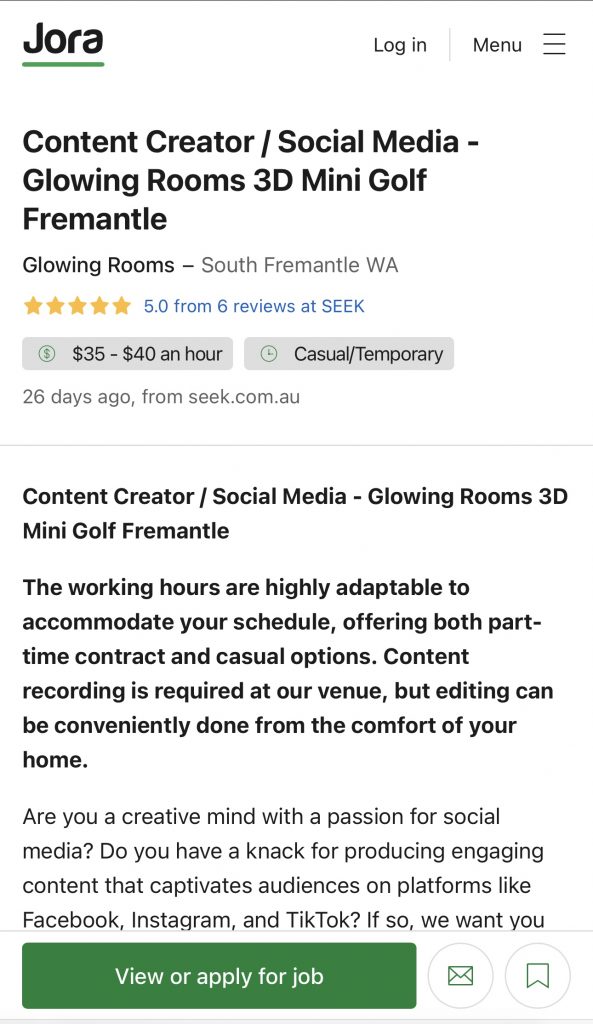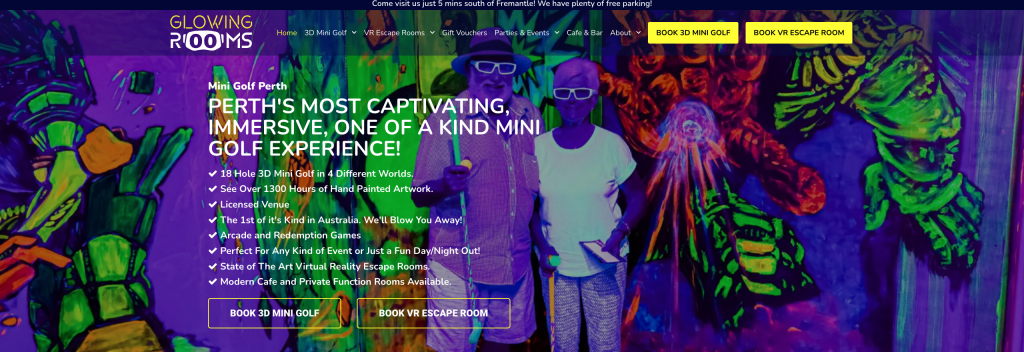Job Interview Stew

Preface:
Welcome back to my blog, where I share my recipes for success based on my experiences undertaking AEL3001 Work-Based Learning. If you are coming here directly from my previous recipe Self-Reflection Pie, welcome back! If you haven’t seen my earlier recipe, why not take a look?
On today’s menu is my brand-new Job Interview Stew, a hearty meal curated from my experience at my recent simulated job interview. Pull on your apron and meet me in the kitchen!
You Will Need;
- Borton’s Model of Reflection (1970),
- Desire to learn from past experiences,
- Time to reflect and check-in with yourself after a daunting experience.

Method:
As you can see, this stew is prepared using Terry Borton’s “Model of Reflection” (Qtd in Driscoll). This model is a fantastic approach to any reflective recipe as it aims to “help each student constantly increase his understanding of his feelings, and expand self-awareness by utilizing the vast intellectual resources available to man” (Qtd in Kean 254), and considering one of the core skill outcomes of my AEL3001 module is to “have the ability and desire to learn for oneself and improve one’s self-awareness and performance” (2), that is precisely what I hope each and every one of you following this recipe achieves.

My stew will specifically relate to my simulated interview for the role of Content Creator for Glowing Rooms 3D Mini Golf, so for best results anywhere I incorporate my personal experiences make sure to infuse your unique experiences from a past interview, or a similar event that you would like to reflect on and learn from.
Let’s get cooking!
Step One: What?
Borton gets straight to the point when laying out the phases of his reflective model. Step one quite literally asks us “What?”. So go ahead, describe exactly what happened that day…
My simulated job interview took place on Thursday the 8th of February 2024. I came across the job advertisement on LinkedIn, below is a screengrab of the job profile as it was when I discovered it;

I spent a couple of days preparing for the interview by scrutinising the job advertisement, paying attention to job requirements and desirable skills. I wrote them down in a list and for each of the key responsibilities listed, I made sure to write down an example of when I had previously gained experience in that area or prepared what my ideas were in the case of questions geared towards the future.
Next, I decided it was important to do some background research on the workplace itself, to get a better idea of their values and priorities. One of the best analogies I have ever read in relation to the importance of being a good interviewee in practice rather than just on paper wittily compares the hiring process to marriage saying “Would you marry someone who was perfect for you on paper but didn’t make you feel good? Of course, you wouldn’t. You’d be miserable” (Qtd in Rivera 1353). I was preparing myself to be the best bride they ever considered… well, not literally but you get the sentiment.

After spending a while exploring their website and social media accounts, I had learned a lot more about the values and mission of the company, and discovered their funky neon vibe!

On the morning of the interview, I made sure to set aside plenty of time to get dressed and ready. I had my clothes laid out the night before as I had learned in class a couple of weeks ago to always dress sophisticatedly for a job interview, so I retired my favourite leggings and hoodie for the day and made an effort with my professional outfit, neat makeup and styled hair.
I walked to campus and located the building and room for my interview. When it was my turn to be interviewed, I made my way to the table and shook hands with my interviewers before sitting down facing them (perhaps a slightly sweaty handshake that is- so if any of my interviewing classmates are reading this blogpost, please accept my humble apology for that).

For the next ten minutes or so, the panel of three classmates took turns asking me questions. I’ll be honest; I don’t actually remember many of the questions I was asked, but I can recall one regarding overcoming a creative barrier in which I replied with an anecdote about the struggles I faced in producing my podcast Worth the Weight last year.
Before I knew it the time was up, and my peers thanked me. I had to give them some space to discuss their thoughts and write up my feedback sheet. I took a seat in another room and picked up my feedback sheet about 10 minutes later. I went home, changed into comfortable clothes and made myself a well-deserved cup of tea to enjoy as I read over my feedback comments.
As you can see, the process of undergoing a job interview is a lot more than just showing up at a certain place at a certain time in a nice blouse, so remember to take all the external factors discussed here into account when you have a job interview on the horizon!
Step Two: So What?
See, I told you Borton tends to get straight to the point. He may be a man of few words, but he certainly has the right ones to use when it comes to exercising reflection. Here we should start analysing and evaluating the implications of every action and outcome set out in step one. For every action taken, and every reaction received, ask yourself to consider their wider significance.
Frank Herbert once said; “One learns from books and example only that certain things can be done. Actual learning requires that you do those things.” (Qtd in Cloke). This is why I believe my simulated interview was one of the most advantageous aspects of my work experience module so far. This far in my life I haven’t really had the opportunity to interview for anything, so this was a whole new experience for me. Let’s put it to the test- what did I learn from engaging in this simulated job interview?

My feedback sheet is very useful here. That’s why I would recommend always asking your interviewer for some feedback whether you’ve been successful or not. Feedback from an employer is like gold dust to the forward-thinking individual.
Poulos and Mahony highlight the impact of “student perceptions of the provider” (153) when it comes to feedback, so it’s important to point out that the interview was conducted and evaluated by classmates, rather than an authentic employer from a workplace so perhaps my subconscious is reminding me of that fact when accepting my feedback. Regardless, it was an invaluable experience, and that one little sheet of writing has taught me an awful lot about myself that I would not have been able to find out on my own.
Something my classmates raised on my feedback form was to “be careful not to repeat yourself” (excuse me for a moment whilst I go back and read over this blog so far to be sure I haven’t been repetitive). This was useful to me because, as I said before, I could barely remember the details of anything I spoke about in the interview as it was such a blurry rush of adrenaline. I now realise that amidst my answers I must have repeated ideas or anecdotes, which is something I tend to do. Now that it has been highlighted to me, I can take the matter into my own hands and improve it. One of the ways I am going to do so is to make sure to take deep breaths and slow down the pace at which I speak in future interviews. Now I realise the benefit of slowing down and taking some more time to mentally think through answers. This alone is sure to transform my self-conduct and success in future interviews. Evidently, I have work to do on accomplishing the outcome set out in the handbook of this module which relates to “improv[ing] confidence in communicating work-related skills” (1). The lesson here? It’s ok to be nervous, but it is also ok to take some time to connect with yourself in stressful situations.

A positive aspect of my feedback highlighted my suitability for the role. It was validating to think that the skills I developed in my personal life and at university have made me a suitable candidate for a job that interests me so much. A lot of this experience came from my work experience, which confirms to me that I have achieved yet another goal of AEL3001, which specifies students should be able to “reflect on their learning from the placement” (1). This made me realise just how useful my engagement in work placement and my work on university assignments have been in shaping me into a creative professional. If I did not have either of these experiences to refer to, I would have had very little to say in the interview and my feedback probably would not have been so positive. So, I have undoubtedly learned the value of learning through doing.
Step Three: Now What?
One of the best things about this recipe is how little steps it entails. Which, in turn, makes it the ideal meal for a busy student like me. Whether you’re in a hurry or not, we’re on step three of three in Borton’s Model of Reflection and will be reaping what we’ve sown very soon.
Here we are going to ask the question, ‘now what?’. This is your chance to consider what you are going to do next, given the experience that you have just had.
As mentioned above, since this interview was conducted by my classmates, I have decided that one of the most beneficial things I could do for myself now would be to schedule an interview with a real prospective employer as soon after graduation as possible. That is why I have actively been searching the internet for graduate jobs in my field of study, something which I would have held off on for months (if not years) if I hadn’t learned the unparalleled value of doing a job interview.
Furthermore, I intend on being an even better version of myself at every single interview I attend. I will take the feedback from this interview to my next interview, and there I will look for feedback to reflect on and carry through to the one after that- in a constant cycle of self-improvement until I find myself in the perfect role. As Narendra Modi says;
“Learning from experience and learning from education, both are important. Your education & values decide how you learn from your experiences”
-Narendra Modi
This experience has inspired me to practice self-reflection in everything that I do in my personal and professional life, and to recognise the value of constructive criticism rather than letting it offend you and set you back from progressing towards your goals.
Conclusion
By now I imagine your kitchen is filled with the sweet aromas of personal growth, contemplation and hopefully plenty of positivity. Garnish your job interview stew with a pinch of thyme, to remind yourself that growth is a journey, and journeys take time.

Tuck in and enjoy! Thank you for following yet another recipe in my self-reflection series.
Works Cited (MLA)
Cloke, Harry. “70 Powerful Quotes about Learning to Inspire You!”, Growth Engineering, 28 Jul. 2022, https://www.growthengineering.co.uk/70-quotes-about-learning/ , Date Accessed: 28 Feb. 2024.
Driscoll, John. Practicing Clinical Supervision: A Reflective Approach for Healthcare Professionals, 2nd edition, Bailliere, Tindall & Cox, Edinburgh, United Kingdom,
Dumlao, Andy. “Cooked Food on White Ceramic Bowl”, Unsplash, https://unsplash.com/photos/cooked-food-on-white-ceramic-bowl-8Scd_34vdsw, Date Accessed: 28 Feb. 2024.
Ellwood, Stephen. “Borton’s (1970) Reflection Model”, ResearchGate, https://www.researchgate.net/figure/Bortons-1970-Reflection-Model-Retrieved-from_fig17_329573841 , Date Accessed: 28 Feb. 2024.
Engelhardt, Christine. “A Book Life”, Pixabay, https://cdn.pixabay.com/photo/2019/06/27/19/25/book-4302990_1280.jpg , Date Accessed: 07 Mar. 2024.
Fabregas, Hansuan. “Stew Beef”, Pixabay, https://cdn.pixabay.com/photo/2022/10/30/05/18/stew-7556613_1280.jpg , Date Accessed: 07 Mar. 2024.
Kean, John M. “Professional Book Reviews”, Elementary English, vol. 49, no. 2, JSTOR, Feb. 1972. pp. 254–57 http://www.jstor.org/stable/41387078. Date of Access: 27 Feb. 2024.
Millar, Sandy. “Gold Wedding Band on White Textile”, Unsplash, https://unsplash.com/photos/gold-wedding-band-on-white-textile-8vaQKYnawHw , Date Accessed: 28 Feb. 2024.
Port, Kathleen. “Street Art Breathe”, Pixabay, https://cdn.pixabay.com/photo/2017/09/06/06/09/street-art-2720456_1280.jpg , Date Accessed: 07 Mar. 2024.
Poulos, Ann & Mary Jane Mahony. “Effectiveness of Feedback: The Student’s Perspective”, Assessment & Evaluation in Higher Education, vol. 33, no.2, University of Sydney, Australia, Apr. 2008. pp. 143-154.
Radosavljevic, Adam. “Handshake Cooperation”, Pixabay, https://cdn.pixabay.com/photo/2018/04/07/13/13/handshake-3298455_1280.jpg , Date Accessed: 07 Mar. 2024.
Rivera, Lauren A. “Go with Your Gut: Emotion and Evaluation in Job Interviews”, American Journal of Sociology, vol. 20, issue 5, University of Chicago, USA, March 2015. pp. 1295-1594.
Smith, Katie. “Avocadoes, Tomatoes, Eggs, Mushrooms, Spring Onions, and Leaves”, Unsplash, https://unsplash.com/photos/avocado-tomatoes-eggs-mushrooms-spring-onions-and-leaves-uQs1802D0CQ , Date Accessed: 28 Feb. 2024.